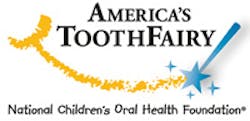Pediatrics and dental public health
BY CHRISTINE NATHE, RDH, MS,
I recently attended the first North American NCOHF Oral Health Zone Program Summit and was inspired by quite a few of the ideas presented. Just a reminder from a past column – National Children’s Oral Health Foundation: America’s ToothFairy® (NCOHF) is a nonprofit organization dedicated to eliminating pediatric oral disease and promoting overall health and well-being for millions of children from vulnerable populations. NCOHF does this by being a comprehensive resource provider for nonprofit community programs delivering critical preventive, educational, and treatment services.
Also by Nathe:Is there really a hygiene shortage?
Also by Nathe:A united front among doctors and staff for finding solutions.
The ideas that were presented at this summit focused on empowering our patients to become the major part of the solution to the access issues we are experiencing. Our patients need to have control over their understanding of their own health and they need to value this ownership. They cannot be empowered without understanding the importance of their oral health and its relationship to their systemic health. Once they understand its significance, the next step is to provide education on preventive strategies that will help them maintain and improve their oral health.
The most viable solutions concerning access to care issues begin with improving the value placed on oral health. Americans need to decide whether they value preventive care enough to practice prevention daily and whether they value this care enough to provide funding for this care (publicly) or to pay out of pocket for these services (privately).
One of the speakers at the summit was a private-practice dentist who shared innovative ideas that encouraged patients to value their dental health and take control of it. Long term, I believe that an approach that educates and empowers patients to take charge of their oral health could subsequently ensure improved oral health outcomes in future generations. This dentist was able to motivate her patients with innovative self-involvement strategies.
Her contributions to her own patients demonstrate the significance we should place on developing solutions designed to improve oral health for all. Both private and public health providers need to work together. The best solutions will utilize the experience and ideas of a diverse group, inclusive of private and public health sectors.
I have written in the past about the importance of collaborative relationships to improve the nation’s oral health, and there are quite a few that we need to strengthen. One such relationship is that between private practitioners and public health providers. We need to collaborate on solutions driven by our mutual commitment to oral health.
As a side note, please see www.AmericasToothFairy.org for more information about America’s ToothFairy — a truly great organization dedicated to protecting the smiles of our most vulnerable children! RDH
CHRISTINE NATHE, RDH, MS, is a professor and graduate program director at the University of New Mexico, Division of Dental Hygiene, in Albuquerque, N.M. She is also the author of “Dental Public Health Research” (www.pearsonhighered.com/educator), which is in its third edition with Pearson. She can be reached at [email protected] or (505) 272-8147.
Past RDH Issues



